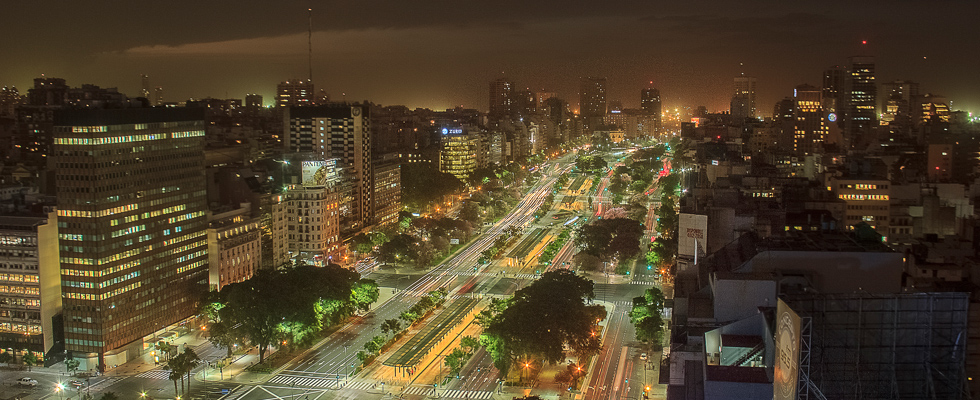

Winter in Buenos Aires

Winter’s the perfect time to soak up the elegant old-world atmosphere at the city’s many historic downtown cafes. Get cosy with a book (preferably one by Borges or Cortázar) and a café con leche y dos medialunas (white coffee and two croissants) or chocolate y churros (fried dough pastry tubes with chocolate for dipping), and watch the city go by. Café Tortoni (Av. De Mayo 825) is the most famous, but there are 56 registered “notable bars” in the city, including the Confitería Ideal (Suipacha 380) with its stunningly opulent French chandeliers, Italian stained glass, marble staircase and old ballroom, Los 36 Billares (Av de Mayo 1271), where you can join the old timers for a game of pool or billiards, and El Gato Negro (Corrientes 1669), which offers a range of spiced teas and coffees, perfect for warming up.

As temperatures drop, many locals seek solace in the warmth of a tango embrace on the dancefloor at one of the city’s many milongas – traditional dance events. You can visit milongas yourself, either to dance or just to watch and have something to eat or drink, while several tour companies offer guided trips.
In August, Buenos Aires hosts its international tango festival, including the tango world championship, which attracts some of the best dancers from far and wide with a programme packed with classes, performances and dance events, from August 8 to August 31 culminating in the championship final at the Luna Park stadium.

“La Rural” is one of the most important agriculture and livestock fairs in the world, and it’s been taking place every July since 1886. Organised by the Argentine Rural Society, and hosted at the exhibition centre and belle-epoque showground also known as La Rural, the event became a fixture on the upper classes’ social scene in the early twentieth century and remains quite a spectacle. The exhibition features hundreds of stands and thousands of animals, particularly cattle, with competitions in various categories, including acrobatic gaucho skills.
Winter also sees Argentina’s most important patriotic holidays – Revolution Day on May 25, Flag Day on June 20, and Independence Day on July 9 – and there are often events organized to celebrate.

Some of Argentina’s most traditional dishes would be unimaginable in summer – a time for barbecues and salads – but they make perfect sense in winter. Hearty stews from the north and Andean regions begin to appear in the city’s restaurants. Dishes like locro, a stew made with meat and corn, are as filling as they are warming, and are particularly popular during the patriotic holidays. We recommend a glass of Malbec on the side for the perfect winter meal.

Now’s the time to get that leather jacket or poncho! While shops in the northern hemisphere are stocking nothing warmer than a summer maxidress, Buenos Aires’ fashion houses are showcasing their winter ranges. For something unique, check out the designer boutiques in Palermo, while there are plenty of leather stores in Villa Crespo, in and around Calle Murillo, and the traditional Feria de Mataderos offers the chance to shop for artisan products alongside real gauchos.

Winter sees the city’s packed cultural agenda at its peak. There are 300 theatres in the city, including the internationally acclaimed Teatro Colón Opera House, which stages Puccini´s Tosca this winter. For a truly physical spectacle, check out Fuerza Bruta at the Recoleta Cultural Centre, while the Centro Cultural Kirchner at the city’s former central post office is launching it’s first full season, with the world-class acoustics of the ballena azul (blue whale) auditorium, and the Usina de Arte in La Boca has regular free concerts, ranging from classical music to jazz, tango and folk.
On the art scene, Yoko Ono and Jeff Koons both have exhibits at the MALBA, there are Mexican murals at the Museo de Bellas Artes, and the Buenos Aires Museum of Modern Art (MAMBA) is celebrating its 60th anniversary with interventions across the city. The animated short film festival Cartón runs September 6 – 12.
There are also a couple of cool festivals. The Polo Circo in May is one of the best circus festivals going, packed with spectacles for all the family, while Ciudad Emergente alternative music festival in June offers a chance to catch some of the city’s best up and coming bands.

While some might find summer in the city excessively hot, winters are mild in Buenos Aires, with frequent sunny days and temperatures rarely falling below 8°C (46.6 °F) at night, and daytime temperatures reaching up to 20ºC (68ºF) and beyond, so it’s still possible to enjoy the city’s many parks and open spaces, to rent a bike and explore different neighbourhoods using the many cycle lanes, and to take advantage of the free guided walking tours and guided treks.